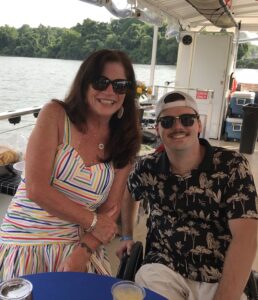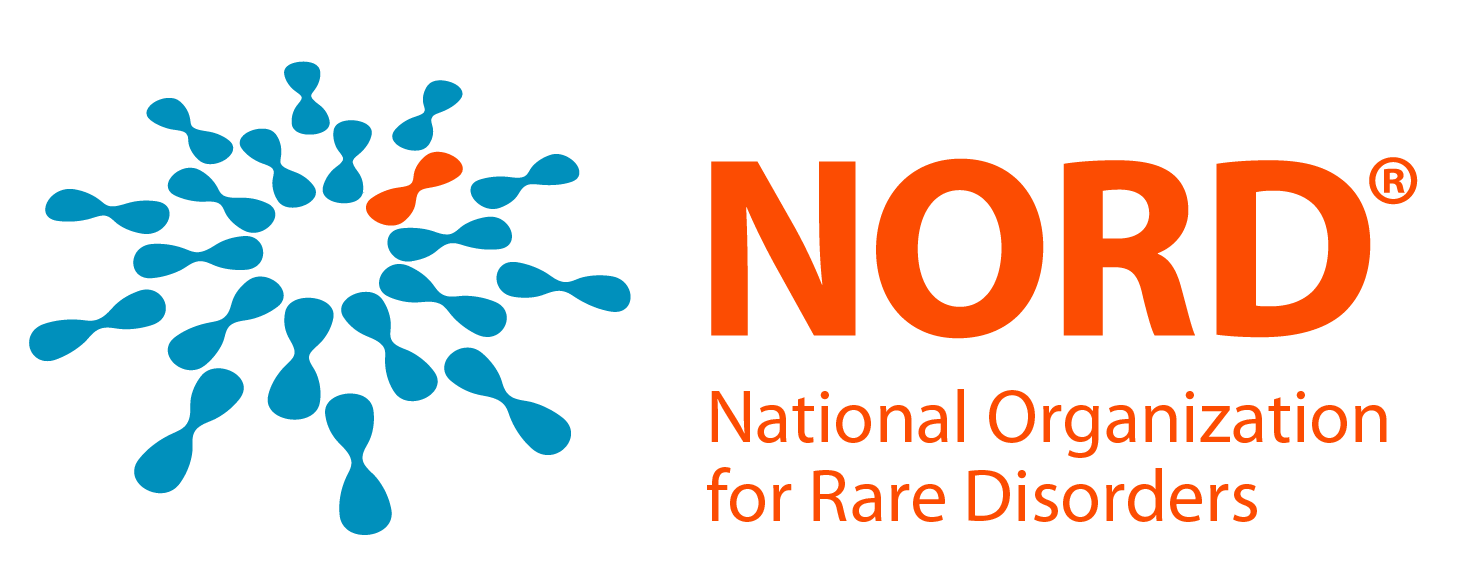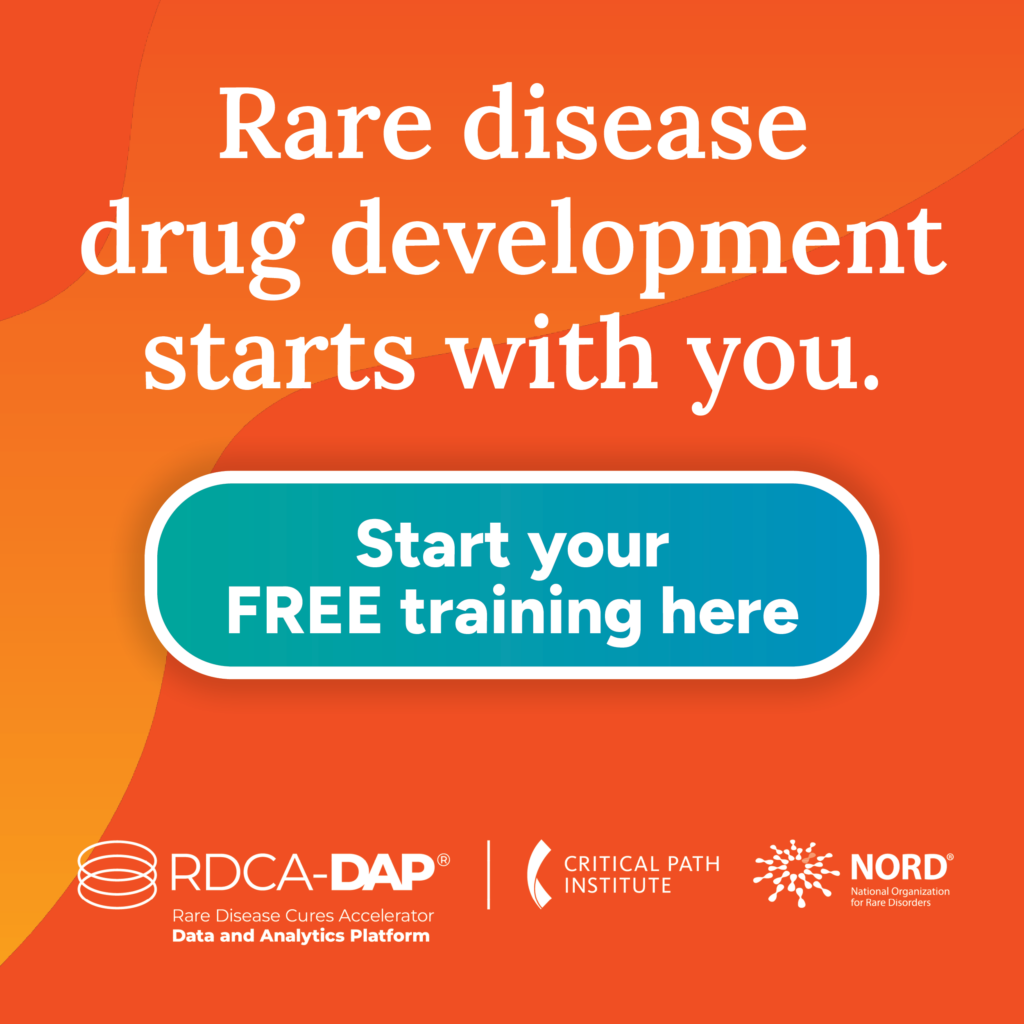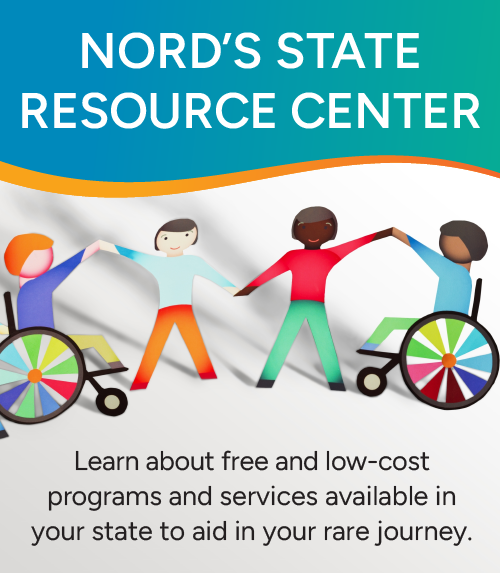On average, it can take five years – or more – for a rare disease to be correctly diagnosed. For Sharon Drennan and her son Rob, it took 15.
“Rob was born with a huge lump on his back. We were told lots of different things in those early months,” she recalls. “We decided it was a cystic mass that would go away; we’re going to monitor it, and he’s going to live a normal life.”
Time passed, and not only did the situation not resolve, but new symptoms emerged, like blue dots on Rob’s skin. The lump in Rob’s back was determined to be a massive growth that had spread throughout his chest and GI system and was now entwined around his spine. Rob was losing cerebral spinal fluid, which he needed to protect his brain, and conservative procedures to patch up the hole in the protective layer around his spine were unsuccessful.
“We had such a hard time finding doctors who would hear us, who would spend time with us, who would treat us. Nobody knew what was causing the growth,» Sharon says. “We got the brushoff a lot.”
The neurosurgeon who had attempted the conservative procedures knew she had to surgically repair the leak – but by the time the procedure was over, Rob, at age 14, was paralyzed, and he still didn’t have a diagnosis.
Like so many parents and caregivers, Sharon took the lead in looking for answers. An online connection directed her to a team of specialists who, within a several minutes of meeting Rob at his first appointment, made a diagnosis: Blue rubber bleb nevus syndrome (BRBN), a rare blood vessel (vascular) disorder that affects the skin and internal organs of the body.
BRBN is characterized by soft, elevated lesions on the skin or just under the skin that are dark blue, red, purple-red or black in color. These lesions slowly bleed internally, which is why Rob had been anemic and required many blood transfusions over the years.
Several years later, Rob’s doctors invited him to participate in a clinical trial for a repurposed drug to treat BRBN, and this drug has since helped Rob and others living with BRBN.
“He rarely needs a transfusion now,” Sharon says. “He’s 29 and has a full-time job. He plays sports, goes to concerts, and lives on his own. He needs to slow down once in a while and get more iron, but overall, he is living his best life.”
 Now, Sharon is on a mission to not only spread awareness of BRBN but also to inform people that there is a potential treatment option that can improve quality of life.
Now, Sharon is on a mission to not only spread awareness of BRBN but also to inform people that there is a potential treatment option that can improve quality of life.
“We have this treatment, which is an amazing, wonderful thing, but our patients are not being diagnosed in a timely manner. If they are getting diagnosed they don’t have access to this repurposed medicine, because nobody knows about it.”
In her quest to raise awareness and build understanding, Sharon recently attended NORD’s Rare Diseases and Orphan Products Breakthrough Summit® in Washington, D.C.
“I cannot believe the connections I made there. Each day I met someone who was helpful, whether by inspiring new ideas or by connecting me to someone else. Attending the Summit was well worth the investment. You cannot put a price on the information sharing and networking that happens there,” she says.
The people she met, and the ideas she discovered, have renewed Sharon’s desire to advocate for her son, the BRBN community, and everyone living with a rare disease. She is committed to ensuring that everyone in America has access to robust newborn screening that can help shorten the diagnostic odyssey that her family experienced. She wants to raise awareness of, and access to, repurposed drugs to benefit those living with a rare disease. And, recognizing that about 80% of all rare diseases are genetic (including BRBN), she is inspired to fight to make genetic testing more widely available.
“The BRBN family is small but mighty. New members all react the same when they find us: they are relieved and grateful. NORDs tagline “Alone we are rare. Together we are strong®” is truly alive and well in the BRBN community,” she says.


